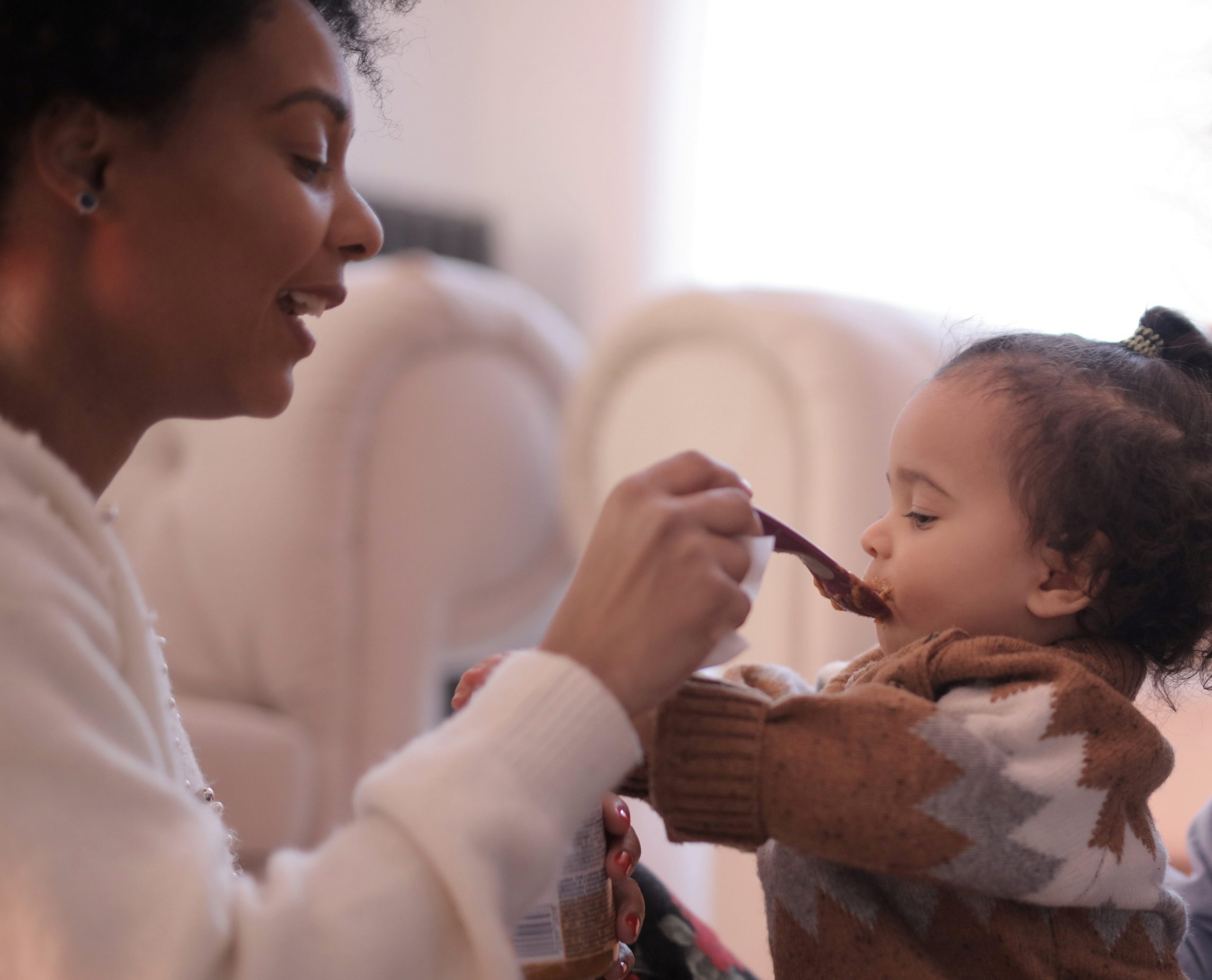
Ready for Weaning?
Babyhood is full of constant learning and change for parents and their little ones. Just as you have settled into the groove with milk feeding, the time comes to think about moving onto solids. There are a lot of myths out there about weaning, so how do you know when your baby is actually ready?

Myth 1: My baby is waking in the night- should I wean?
Whilst it can be true that waking in the night means your little person is hungry, it does not necessarily mean they are needing solid food. Babies wake for various reasons; they may be too hot, too cold, teething, hungry, thirsty or just want a cuddle. It is perfectly normal for some little ones to want to breast or bottle feed through the night until they are fully weaned, or even past weaning. So night waking for milk does not mean your baby needs solids. Always check they are developmentally ready before you try weaning, using The Weaning Checklist I have included below.
Myth 2 : My little one is chewing on their toys and fists- do they want food?
Babies just love to put things in their mouths! Whilst it may appear that they are chewing on toys or their own hands due to hunger, it could actually be that their gums are hurting, that they are playing, or self soothing.
Myth 3 : My baby is is 6 months old- should I start weaning?
All babies develop at different rates. Waiting until 6 months does mean that your little one is more likely to be able to chew, swallow and digest food safely but sometimes they are ready a little bit earlier. It is important not to introduce solid food before 4 months and to not delay weaning later than 6 months.

The Weaning Checklist
You want to wait until your little one is “developmentally ready” for weaning; this means they need to be able to sit in the right position, they can bring food to their mouths and they can chew and swallow. Have a look at the checklist below:
- Can they sit up properly and stay in a seated position long enough to eat?This doesn’t have to be unaided- it is fine for them to be supported but they need to be upright and not slumped so they can swallow safely.
- Can they pick up something with their hands and pop it in their mouth?Even if you start with spoon feeding it won’t be long until they are having finger foods.
- Have they stopped thrusting their tongue out?You want your little one to be able to chew, move food around their mouth and swallow, not push the food back out.
If you are in any way unsure or have any questions, please check with your health visitor, GP or local Surestart centre.




